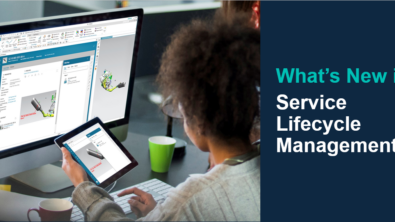Asset as a Service for OEMs – why now?

It was almost 58 years ago, in October 1962, that Rolls Royce invented its ‘Power-by-the-Hour’ trademark to support the Viper engine on the de Havilland/Hawker Siddeley 125 business jet. A complete engine and accessory replacement service offering on a fixed-cost-per-flying-hour basis.[1]
This provision aligned the interests of the manufacturer and operator, who only paid for engines that performed well.
In today’s market, discrete product manufacturers are facing growing competition and lower profit margins for their new equipment sales.
Much like the appeal of Software-as-a-Service (SaaS) to software vendors, Original Equipment Manufacturers (OEMs) can get stable revenue from service, often with higher margins than sales of new equipment.
Research shows that After-sales services “contribute to about 25 percent of all revenue and 40–50 percent of all profits for manufacturing companies.”[2]
Also, one McKinsey analysis across 30 industries showed that the average earnings-before-interest-and-taxes (EBIT) margin for aftermarket services was 25 percent, compared to 10 percent for new equipment.[3]
Industrial OEMs understand their products better than third-party providers, having partnerships within their channels, and leveraging collected proprietary data of their equipment from their installed base, which allows them to best capture aftermarket value.
In many cases, however, the OEMs are facing the fierce competition of third-party service providers and part manufacturers who offer less expensive compatible spare parts and services.
When it comes to an “Asset-as-a-Service” business model, the motivation of OEMs is different; spare parts consumption becomes an expense rather than revenue, and so does the downtime of an asset.
This scenario leads to a much better alignment of interests between OEMs and operators.
For example, with the classic model, a downtime of an aircraft impacts mostly the airline operator and service contractor while it brings spare parts revenue to the OEM. In an Asset-as-a-Service model, the OEM is the service provider and shares the same impact as the airline operator for downtime.
While OEMs cannot eliminate industry-specific constraints in the aftermarket, they can take steps to increase lifetime penetration, annual services revenue and product lifetime. The first step involves creating a comprehensive digital tool that models the installed base and analyzes individual pieces of equipment.[4]
Nevertheless, just increasing aftermarket revenue is not enough. We need to maximize operational margin to increase profitability. Hence, OEMs must be capable of monitoring their margin along with their revenue continuously.
This process is achievable through an effective “digital twin,” depicting the complete process from design through aftermarket usage.
With a closed feedback loop between all lifecycle phases, such as design, production and after-market, the “closed=-loop digital twin” allows continuous design and manufacturing improvements through insight to the real usage. By leveraging data analytics and artificial intelligence (AI) technologies, problems are predictable ahead of asset failure and thus reducing the asset’s downtime.
Today’s Industrial Internet of Things (IIoT), and data analytics technologies such as artificial intelligence, machine learning, allow setting an effective digital twin solution to retain profitability by ensuring effectively of their service operations:
- Accurate prediction of potential risks
- Balanced inventory
- Spare parts availability to minimize downtime yet keep inventory cost under control

Siemens Digital Industry Software offers a complete end to end Service Lifecycle Management set of solutions to allow the setup of an effective digital twin, through the deployment of integrated yet modular solutions.
By offering their products as a service, OEMs could take advantage of the aftermarket business potential through the realization of their inherent strength as equipment manufacturers.
As part of the Xcelerator integrated portfolio of software, services and application development platform Siemens Digital Industry Software offers a complete end to end Service Lifecycle Management set of solutions to allow the setup of an effective digital twin through the deployment of integrated yet modular solutions.
For more information, please contact us.
About the author
Yishai Barak has over 20 years of experience in software development and managerial positions in large global companies as well as startup environments, at both web andcloud-based technologies and at enterprise grade systems
Currently head of Service Lifecycle Management (SLM) business unit at Siemens Digital Industry Software with overall responsibility for product planning and development, business development, go-to-market, strategic portfolio planning and sales-enablement.
[1] https://www.rolls-royce.com/media/press-releases-archive/yr-2012/121030-the-hour.aspx
[2] https://www.researchgate.net/publication/337468047_After-sales_services_and_aftermarket_support_a_systematic_review_theory_and_future_research_directions
[3] https://www.mckinsey.com/industries/advanced-electronics/our-insights/industrial-aftermarket-services-growing-the-core
[4] https://www.mckinsey.com/industries/advanced-electronics/our-insights/industrial-aftermarket-services-growing-the-core


